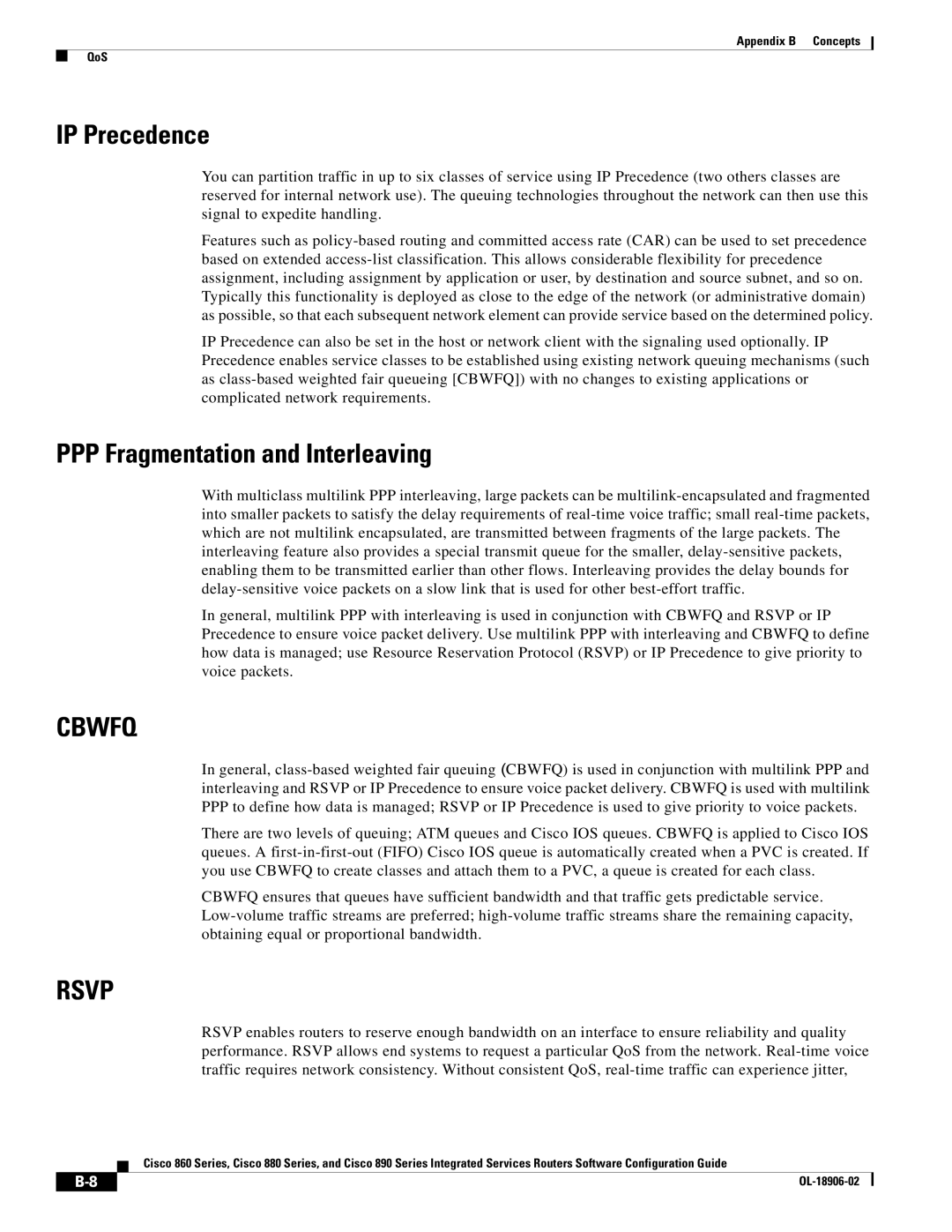
Appendix B Concepts
QoS
IP Precedence
You can partition traffic in up to six classes of service using IP Precedence (two others classes are reserved for internal network use). The queuing technologies throughout the network can then use this signal to expedite handling.
Features such as
IP Precedence can also be set in the host or network client with the signaling used optionally. IP Precedence enables service classes to be established using existing network queuing mechanisms (such as
PPP Fragmentation and Interleaving
With multiclass multilink PPP interleaving, large packets can be
In general, multilink PPP with interleaving is used in conjunction with CBWFQ and RSVP or IP Precedence to ensure voice packet delivery. Use multilink PPP with interleaving and CBWFQ to define how data is managed; use Resource Reservation Protocol (RSVP) or IP Precedence to give priority to voice packets.
CBWFQ
In general,
There are two levels of queuing; ATM queues and Cisco IOS queues. CBWFQ is applied to Cisco IOS queues. A
CBWFQ ensures that queues have sufficient bandwidth and that traffic gets predictable service.
RSVP
RSVP enables routers to reserve enough bandwidth on an interface to ensure reliability and quality performance. RSVP allows end systems to request a particular QoS from the network.
Cisco 860 Series, Cisco 880 Series, and Cisco 890 Series Integrated Services Routers Software Configuration Guide
|
|
| |
|
|
